Archives of the Mobile Lanscape:
Skopje Postcards, 1899-2014
by Prof. Christina Kramer
On Sunday April 22 2018, the CMHS held it’s Annual General Meeting for its members.
After the meeting we had a special presentation by Christina Kramer, Professor of
Slavic and Balkan Languages (Dept. of Slavic Languages & Literatures) University of Toronto.
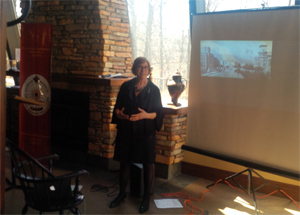
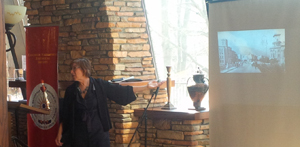
Professor Kramer’s presentation offered a sneak preview of a book that she currently
writing (under contract with McGill Queens Press). In the paper, she looks at the
ways in which the postcard frame provides different interpretations of the cityscape
through history and changing governments. The postcards provide both visual and written
record of a century of war, earthquake, occupation, and independence. The focus is four
iconic sites in the city centre: the fortress, the bridge, the square, and the market.
These sites have been renamed, reframed, and recast within different urban narratives.
The bridge, the square, and the Kale fortress form the epicentre of the city, as we see
in this card from the first decade of the 20th century, produced by Max Fruchtermann,
one of the most famous producers of postcards during the Ottoman Empire:
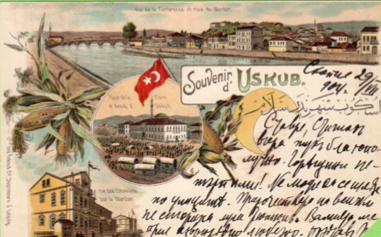
We see the way different occupying governments changed the names of places: e.g. the
square has been called Kaiser Wilhelm Square, King Peter’s Square, Marshall Tito Square,
Macedonia Square. The historic bank building that stood on the east corner of the square
until it was bombed by the Germans and later collapsed during the 1963 earthquake, has
sported a swastika during Bulgarian occupation in the early 1940s and a hammer and sickle
in the 1950s as can be seen in the cards below:
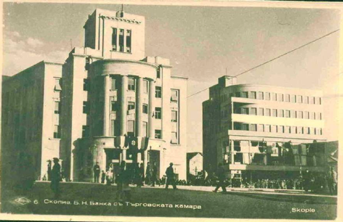
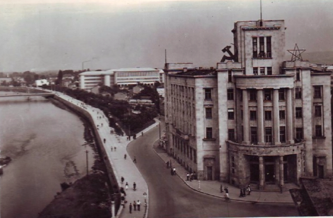
The new Mac Telecom building that sits on the site can now be seen as
paying homage to the history of the building that stood there before:
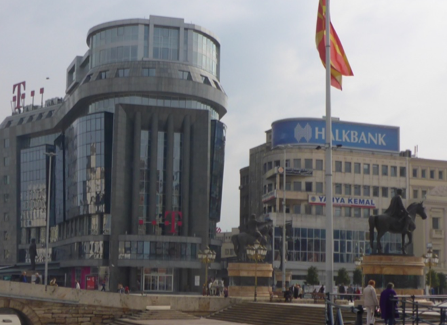
The changing languages on the cards, the changing images, and the messages—written by
French soldiers in 1918, young Yugoslav soldiers in the 1970s, travelers from Europe and
North America, students from a variety of countries who wrote of a changing city—all
allow us to understand the history of a city that has endured a remarkable century of
cycles of manmade and natural destruction, rebuilding, and reimagining the urban landscape.
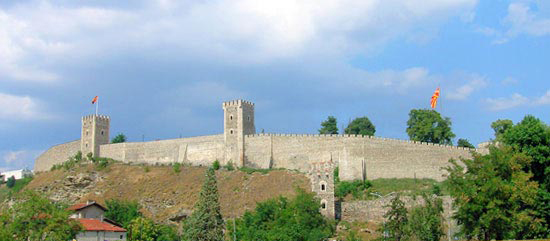
Kale Fortres
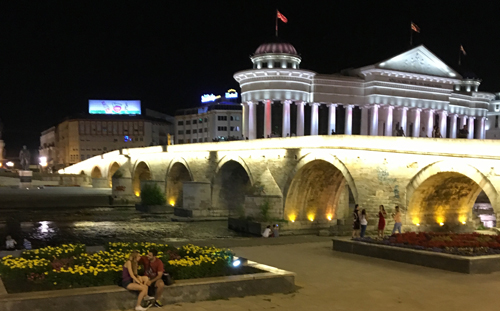
The Bridge
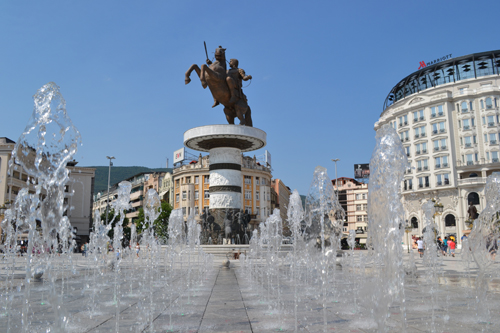
The Square
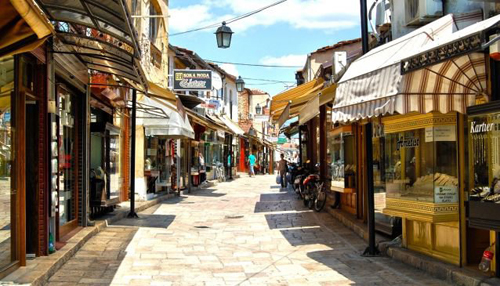
The Old Bazzar Market